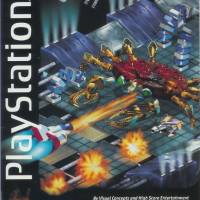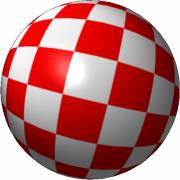Game reviews
AMIGAphile Volume 1 Number 3 (SEPTEMBER 1992)

Monkey Island II: LeChuck's Revenge
by Paul Miller
Lucasfilm Games has done it again. I'll just skip any corny introduction I might have spent more effort cooking up -- This game is simply amazing!
Guybrush Threepwood is back, a little older, a little less naive, and with an entirely new adventure ahead. Monkey Island II has four islands, an evil pirate's fortress, some new friends, very tricky puzzles, really cool music, and that great Lucasfilm humor. All on a whopping ELEVEN disks! You don't need a harddrive, but if you don't have one here's your excuse.
You don't need to have played the first Monkey Island, but it helps, since you'll meet up with people from the first game. Ever wonder what happened to 'ol Stan, or how Guybrush fared with Elaine?
Now Guybrush is after the legendary treasure of Big Whoop, which could also be his ticket to finally destroying his arch-nemesis and really creepy dead dude, the Ghost-Pirate LeChuck! That's right, LeChuck is back too and revenge is on his decomposing mind.
Better brush up on your voodoo and roulette, because this one's a toughy. Fortunately, there are two versions of the game: the normal version and the "whimpy" one, which doesn't have all of the puzzles. Some of these brain-teasers aren't very obvious at first (or even last), but once you figure them out (or get some nice person on the Internet to give you some hints) you'll likely laugh your head off! The frustration and anxiety are well worth the effort!
If you're not familiar with this type of game, it's what's commonly termed an "interactive graphics adventure." Most of the screen is the view of what's going on in the game and the lower portion of the screen has a bunch of words describing what you can do, along with little icons representing your inventory. To look at an object, you would click on "look" and then on the object (either on the viewscreen or in your inventory). There are keyboard shortcuts for most of the commands, so you can press 'L' and then point the mouse at the object. A two-handed operation like this works a bit faster than just using the mouse. When you need to talk to another person, the control area turns into a list of phrases you can say. Click on a phrase and it appears above Guybrush's head while his mouth moves (as do all characters when they speak). He even gestures with his hands convincingly where appropriate! At any rate, the interface is very intuitive and easy to learn.
The graphics were converted very well from 256-color VGA. The animation is fluid, and most of the sequences are quite humorous. Sound effects are limited but the music is great, changing styles depending on the location, and setting a distinct mood for each. It's especially nice running through a sound system with a bit of hall reverb if you have a digital signal processor.
The game will run in 1 megabyte of RAM, and the copy protection is a cute code-wheel affair with some very interesting cures for some common pirate diseases. There's only one problem: it won't run under AmigaDOS 2.0. You have to switch to 1.3 to get it to work correctly. This may be a problem for A3000 owners with 2.0 in ROM. Perhaps some tweaking with cache and RAM options will allow it to work.
Retail: $59.00
I can't rave enough about Monkey Island II. What an experience! I spent a whole week on it and hated when it was over -- and what a surprise! I can only hope there's more to come from LucasFilm Games.
On a scale of one to ten, this is a definite TEN!
Building a World: SimEarth vs. Global Effect
by Mike Neylon
Remember the good old days of Populous and SimCity? Two relatively simple games to learn, but required strategy and planning to conquer? Well, with the release of SimEarth and Global Effect (as well as Civilization), you can now prepare yourself for hours of strategy and planning as you construct your own world.
SimEarth, by Maxis, uses the same premise as SimCity and SimAnt: the development and manipulation of 'sims', computer-controlled creatures that follow basic instinct. Your goal in SimEarth is to create a suitable environment for your sims to evolve from singled-cell life-forms to space- age civilizations. You are allocated a 'energy budget' which grows based on the number and type of life-forms present. Your energy is reduced as you perform actions on your planet: adjusting the water cycle, increasing seismic activity, decreasing the reproduction rate, and several other features. You can also add life-forms and terrains to the planet. And for fun, you can send that random meteor or tidal wave and see how the sims react.
The full game is played in 4 stages. Each stage represents an evolutionary cycle, and requires a fulfillment of a goal to proceed to the next stage. For example, in the first stage, you must create a planet suitable for life, cause life to begin, and to get land-roaming creatures. In the final stage, you must take the sentient race from the start of the Industrial Age to the beginning of space travel. The time scale in each stage varies, from billions of years in the beginning, to hundreds of year at the end.
The sims, as well as the planet, are controlled by a theory known as the Gaia effect. The theory states that the planet and life are connected in complex ways, and the actions of one will affect the other. This is very well implemented in SimEarth. Once cities start appearing on your planet, you will notice an increase in temperature, carbon dioxide levels, and the planet will react, with severe weather and changes in the environment. A special interface can be used to 'talk' to your planet, but this merely consists of a few sentences of advice.
Global Effect, from Millennium, also uses the concept of creating your own world, but from a different starting point. In Global Effect, you must colonize a world, using its resources wisely and carefully, but without upsetting the environment of the world. Again, you have an 'energy budget' which grows with the production of fuel from the planet. Building production sites, cities, forests and park lands, and farms all cost money. However, you are less directly in control of the planet. If the planet starts to freeze, you just can't increase the greenhouse effect - you must build services to fix that, or destroy the existing services that create the cold temperatures.
Power can come from several resources including oil, coal, nuclear, solar, and wind. If necessary, the resources must be processed before use, and storage devices must be created. Power must be supplied to the city, and distribution is very important. You also must provide fresh water, sewage treatment, recycling programs, and hospitals for the people. However, an eye must be kept on resources and the planet. Once mines are mined out, they are shut down, and are unusable.
Several one player situations are available, including creating a colony on several different types of planets and repairing damage done to a planet. However, there are also features to play with a second player over a modem, or to play against the computer, either to create a world, or to win control over a world. Several services are added for that goal, including missile silos, airfields, and harbors.
Global Effect is filled with information, as is SimEarth. Ozone layer levels, pollution, and contamination are just some of the data one can inquire about. Both games are HD-installable, and work under both 1.3 and 2.0. Neither require a lot of memory (can be run on a 1 meg machine), and both are multi-tasking.
I must admit, Global Effect has one of the best-looking interfaces I've seen for a game. The 32-color presentation is magnificent, and can be played in NTSC or PAL. SimEarth is only 16 colors, but some of the creature icons are done quite well. The worlds in Global Effect are much larger than those in SimEarth, and seem to have a much better resolution in the end. The SimEarth interface also seems to have a few bugs (a button doesn't activate once in a while). However, control in SimEarth is much easier. You can select an object using a menu-like technique, while in Global Effect, you must scan through a list of icons to choose an object (you can define the function keys to select an object). Moving in SimEarth involves moving the mouse to the edges of the screen causing it to scroll, while in Global Effect, you must constantly click on a directional pad, which costs you energy points. Also, you seem to have a more direct control on your planet in SimEarth; the results of your actions seem to come much faster.
Although the concepts are basically alike, strategy is vastly different. In SimEarth, I found that I could make several mistakes without a major change happening on the planet. Therefore, I had a bit more room to experiment. In Global Effect, moves are very costly, so one must be cautious and plan well in advance. Spacial arrangement of the buildings in Global Effect is also a prime consideration, unlike SimEarth. For example, start building too far away from a water source, and you will start to lose people due to dehydration.
As for complexity, both games must have a very large algorithm to handle the simulation. The reproduction and mutation of species in SimEarth, and the environmental effects of habitations in Global Effect are modelled very well.
Both games also have a definite bad point. In SimEarth, a noticeable lag time occurs quite often, and play is sometimes very slow. In Global Effect, the computer opponent is very fast, and I have yet to be able to keep up with it before being destroyed. Besides other minor points, both games are very enjoyable, and will provide hours of fun as you become a god once again...
RATINGS
SimEarth
- originality: 9
- graphics: 7 (could have used 32 colors, I think)
- sound: 3 (only merit is the introduction of the tone monitor)
- playability: 8
- OVERALL: 8
Global Effect
- originality: 8 (I think this one followed in the other's shadows)
- graphics: 10
- sound: 8 (good intro music, sound accompanies mouse clicks)
- playability: 7
- OVERALL: 9

























